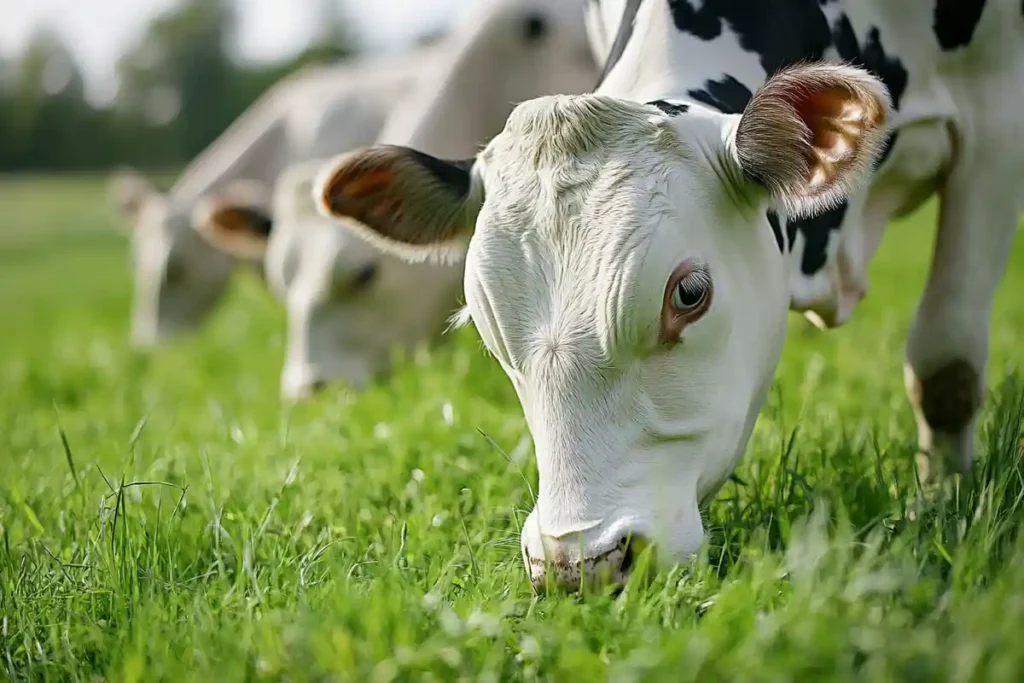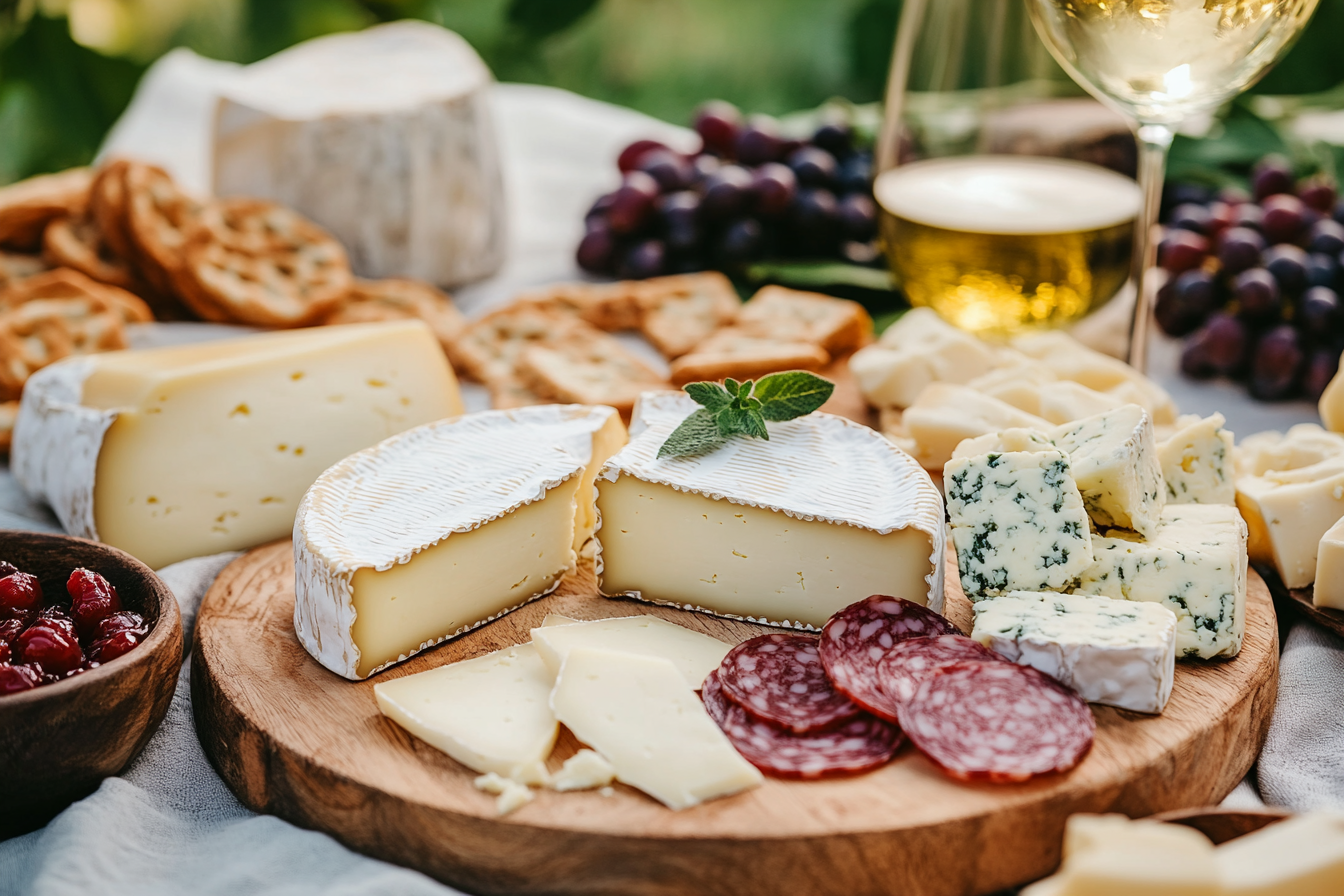Discover the origins, flavors, and cooking uses of Gruyère cheese. Learn why this Swiss classic is a favorite for chefs and food lovers worldwide.
Overview of Gruyère Cheese
Gruyère cheese—it’s one of those names that immediately brings sophistication to mind, doesn’t it? This Swiss marvel is not only a cornerstone of its native culinary tradition but has also earned its place in kitchens and recipes worldwide. Whether you’re a food enthusiast or a curious home cook, there’s something truly magical about Gruyère’s versatility, flavor, and charm.
Origin and History of Gruyère
A Look at Gruyère’s Swiss Roots
Gruyère cheese traces its origins to Switzerland, specifically the picturesque region of Gruyères in the canton of Fribourg. It’s a name protected by law under the Appellation d’Origine Contrôlée (AOC), ensuring that authentic Gruyère is crafted with time-honored techniques. The history dates back to at least the 12th century, making this cheese as much a cultural icon as a culinary one. Interestingly, Gruyère’s production methods have changed little over the centuries, preserving its authentic taste and quality.
The Alpine pastures where the cows graze lend a unique richness to the milk used for Gruyère. Additionally, the cheese embodies the art of traditional cheesemaking—a legacy that Swiss farmers and artisans proudly maintain. It’s more than just cheese; it’s a slice of history in every bite!
Key Characteristics of Gruyère Cheese
Texture, Flavor Profile, and Aging Process
Gruyère stands out for its distinct, slightly nutty flavor profile, with subtle hints of sweetness. Young Gruyère has a creamy texture that gradually evolves into a firmer, slightly crumbly texture as it matures. The aging process, typically between five to twelve months, is where the magic happens. During this time, the cheese develops its characteristic complexity—ranging from buttery and mild to bold and earthy, depending on its age.
Its golden rind encases a pale yellow interior, dotted with tiny holes. These “eyes” aren’t just for looks; they’re a hallmark of quality, formed naturally during fermentation. Whether melted over a dish or served in slices, Gruyère’s balance of texture and flavor makes it incredibly versatile.
Importance of Gruyère in Culinary Culture
Gruyère isn’t just another cheese—it’s a culinary staple that’s influenced food culture across the globe. Its exceptional melting qualities and robust flavor make it an integral part of countless dishes.
Why Gruyère is a Staple in Swiss Cuisine
In Switzerland, Gruyère is revered as more than just an ingredient. It’s at the heart of iconic dishes like fondue, where its creamy texture ensures a silky, indulgent experience. Likewise, Swiss rösti and traditional quiches wouldn’t be the same without it. Gruyère embodies the comfort and warmth of Swiss food, often symbolizing gatherings and shared meals.
The Role of Gruyère in Global Gastronomy
Globally, Gruyère is a sought-after choice for its versatility. From French onion soup to croque monsieur, this cheese elevates even the simplest recipes. Professional chefs and home cooks alike rely on its ability to complement everything from rich meats to delicate vegetables. Not to mention, it’s a star player in cheeseboards, paired beautifully with fruits, nuts, and a good glass of wine.
Who Should Know About Gruyère Cheese?
So, who exactly benefits from exploring the wonders of Gruyère? Honestly, everyone with a taste for good food!
Culinary Enthusiasts and Food Professionals
For chefs and culinary enthusiasts, Gruyère is a must-have in the toolkit. Its reliable melting properties and depth of flavor make it a go-to for gourmet dishes. Moreover, it’s a cheese that tells a story, adding authenticity and flair to any menu.
Cheese Aficionados and Home Cooks
Meanwhile, for cheese lovers and home cooks, Gruyère offers an approachable yet sophisticated option. Whether you’re making a gooey grilled cheese sandwich or an impressive cheese platter for guests, Gruyère guarantees a touch of elegance. Plus, it’s a fantastic starting point for anyone diving into the world of artisanal cheeses.
Understanding the Basics of Gruyère Cheese

Gruyère cheese might seem straightforward at first glance, but there’s so much more beneath its golden rind. To truly appreciate its unique qualities, it’s essential to understand what sets it apart from other cheeses.
What Makes Gruyère Cheese Unique?
Milk Source, Production Methods, and Geography
The secret to Gruyère’s signature flavor lies in its roots. It begins with high-quality, raw cow’s milk sourced from Switzerland’s lush Alpine pastures. This milk, rich and creamy, provides the foundation for the cheese’s unparalleled taste and texture.
Gruyère is made using a time-tested production process. Cheesemakers heat the milk in large copper vats, adding rennet to form curds. These curds are then pressed, salted, and aged in caves where the temperature and humidity are carefully controlled. The process allows the cheese to develop its complex flavor profile, ranging from mild and creamy when young to bold and nutty as it matures.
Geography also plays a critical role. The Alpine pastures where cows graze are rich in wildflowers and herbs, which directly influence the milk’s flavor. This unique terroir ensures that authentic Gruyère can’t be perfectly replicated elsewhere.
Nutritional Profile of Gruyère
Key Nutrients and Health Benefits
Gruyère is not only delicious but also packs a nutritional punch. It’s an excellent source of protein, calcium, and essential vitamins like B12 and K2. A single serving provides approximately 8 grams of protein, which helps support muscle repair and growth. Additionally, its high calcium content promotes bone health—a bonus for cheese lovers!
For those concerned about fat content, it’s worth noting that Gruyère contains healthy fats, including conjugated linoleic acid (CLA), which may have anti-inflammatory properties. However, as with any cheese, moderation is key. The combination of nutrients in Gruyère makes it a tasty way to meet some of your daily dietary needs.
Comparison of Gruyère with Other Cheeses
Gruyère often finds itself in good company, drawing comparisons to several well-loved cheeses. But how does it truly stack up?
What Cheese is Gruyère Similar To?
Differences and Similarities with Emmental and Jarlsberg
Gruyère shares several characteristics with Emmental, another iconic Swiss cheese. Both have nutty flavors and smooth melting qualities, making them popular choices for fondue. However, Gruyère’s flavor is typically more robust and less sweet than Emmental. Jarlsberg, on the other hand, has a milder, buttery taste that appeals to those who prefer a subtler cheese.
The primary differences come down to texture and aging. While Emmental and Jarlsberg often feature larger “eyes,” Gruyère’s smaller, more uniform holes and firmer texture set it apart. These nuances make Gruyère a standout in both flavor and appearance.
Are Gruyère and Gouda the Same?
Key Distinctions in Flavor, Texture, and Uses
While Gruyère and Gouda might seem similar at first glance, they are distinct in many ways. Gouda, originating from the Netherlands, has a creamier, sweeter profile compared to Gruyère’s nuttier, more savory taste. Gouda also tends to have a softer texture, making it a popular choice for snacking.
When it comes to cooking, Gruyère holds a clear advantage. Its superior melting properties make it ideal for fondues, gratins, and sauces, whereas Gouda shines in sandwiches and as a table cheese. These differences highlight the unique roles each cheese plays in the kitchen.
Is Gruyère the Same as Mozzarella?
A Comparison of Texture, Melting Properties, and Taste
Gruyère and mozzarella couldn’t be more different, despite both being famous for their melting capabilities. Mozzarella is a fresh cheese with a mild, milky flavor, while Gruyère’s aged complexity brings a depth that mozzarella simply can’t match.
Texture-wise, mozzarella is soft and stretchy, ideal for pizzas and caprese salads. Gruyère, on the other hand, has a denser texture and a rich, savory flavor that shines in dishes like gratins and soufflés. These differences ensure that each cheese serves a specific purpose, enhancing a variety of culinary creations.
Common Misconceptions About Gruyère Cheese
Despite its popularity, Gruyère is often misunderstood. Let’s clear up some of the most common myths.
Addressing Myths About Its Origin
A frequent misconception is that Gruyère is made exclusively in France. While some French cheeses carry the name Gruyère, authentic Gruyère with AOC status comes only from Switzerland. This distinction is critical, as Swiss Gruyère adheres to strict production guidelines that preserve its authenticity.
Misunderstandings About Gruyère’s Role in Recipes
Another myth is that Gruyère is too fancy for everyday use. While it’s true that Gruyère elevates gourmet dishes, it’s equally at home in simple recipes. Whether melted over a burger or stirred into a pot of soup, Gruyère proves that exceptional flavor doesn’t have to be complicated.
Practical Uses of Gruyère Cheese in Cooking
Gruyère cheese is like that one friend who can fit in anywhere—elegant at a fancy dinner party and still perfect for a casual movie night snack. Its versatility shines in countless recipes, from comforting classics to everyday staples.
Gruyère in Classic Dishes

Fondue, Quiches, and Soufflés
Gruyère is the star of the show when it comes to Swiss fondue. Its creamy texture and nutty flavor create a silky, flavorful dip that’s perfect for bread, vegetables, and even fruits. In quiches, Gruyère delivers richness and depth, balancing beautifully with eggs and cream. And when it comes to soufflés, its meltability and bold flavor ensure a light yet indulgent dish that’s sure to impress.
If you’ve ever enjoyed a Gruyère-laden dish, you know it doesn’t just enhance the recipe—it defines it. Whether it’s the gooey topping on French onion soup or the savory base of a potato gratin, Gruyère is always the ingredient that takes things up a notch.
Everyday Recipes Featuring Gruyère
Sandwiches, Salads, and Soups
For everyday cooking, Gruyère is a game-changer. Imagine a warm grilled cheese sandwich with Gruyère oozing out between slices of crispy, buttered bread—it’s the stuff of dreams. Toss it into a salad, and you’ll find its nutty notes complement fresh greens and vinaigrettes perfectly.
Soups also benefit greatly from Gruyère. Whether it’s melted on top of a bowl of creamy tomato soup or stirred into a hearty chowder, it adds a luxurious touch. And let’s not forget casseroles! Gruyère’s rich flavor and creamy melt make it an ideal choice for baked dishes.
Pair Gruyère with freshly baked breads or rolls to create a simple yet sophisticated appetizer—try it with these brown and serve dinner rolls for a delightful pairing.
Tips for Selecting and Storing Gruyère Cheese
Like any fine cheese, Gruyère deserves a little care and attention to keep it at its best. Knowing how to choose the right Gruyère and store it properly can make all the difference.
How to Identify High-Quality Gruyère
When shopping for Gruyère, look for a golden-brown rind and a firm, pale-yellow interior. The aroma should be mildly sweet and nutty—not overpowering. Avoid cheese with cracks or overly dry surfaces, as this could indicate improper storage or age.
Additionally, authentic Gruyère will often have a label indicating its AOC status. This certification guarantees the cheese was made using traditional methods in its Swiss homeland. Choosing high-quality Gruyère ensures you get the full depth of flavor and creamy texture this cheese is known for.
Proper Storage Methods to Retain Freshness
To keep your Gruyère fresh, wrap it in parchment or wax paper, then place it in an airtight container or resealable plastic bag. Store it in the refrigerator’s vegetable drawer or another low-humidity area to prevent it from drying out.
For longer storage, Gruyère can be frozen, but this might slightly affect its texture. If freezing, wrap it tightly to minimize freezer burn and use it within a few months. When thawed, it’s best used in cooking rather than for snacking.
Future Trends in the Gruyère Market
Gruyère isn’t just a staple—it’s also a trendsetter. As the global demand for artisanal and specialty cheeses grows, Gruyère continues to evolve, staying relevant in an ever-changing market.
Growing Popularity of Artisanal Cheese
Artisanal cheeses are having a moment, and Gruyère is leading the charge. Cheese lovers increasingly seek out high-quality, authentic products, and Gruyère’s traditional production methods make it a standout choice. Additionally, the emphasis on sustainability and ethical farming aligns perfectly with the values of today’s consumers.
Innovations in Gruyère Production
Even with its centuries-old heritage, Gruyère isn’t stuck in the past. Innovations in production—like eco-friendly practices and new aging techniques—are helping this cheese appeal to a modern audience. Some producers are experimenting with organic certifications, while others explore new flavor profiles by tweaking the aging process. These innovations ensure that Gruyère remains a favorite for generations to come.
Summary and Final Thoughts on Gruyère Cheese
Gruyère is more than just a cheese—it’s a celebration of flavor, history, and craftsmanship. From its humble Swiss origins to its place on global menus, it has proven its worth time and time again.
Recap of Gruyère’s Versatility and Appeal
Whether melted into a fondue, sliced for a sandwich, or grated over a salad, Gruyère’s versatility knows no bounds. Its rich, nutty flavor and smooth texture make it an irreplaceable ingredient in both everyday meals and gourmet creations.
Why Gruyère Deserves a Spot in Your Kitchen
If you haven’t already stocked your fridge with Gruyère, now’s the time. Its ability to transform simple recipes into unforgettable dishes makes it a must-have for home cooks and professionals alike. Plus, it’s a fantastic way to bring a little bit of Switzerland to your table—no plane ticket required.
FAQs
What Cheese is Gruyère Similar To?
A Detailed Comparison with Emmental and Raclette
Gruyère shares similarities with other Swiss cheeses like Emmental and Raclette. Emmental, with its signature large holes, has a slightly sweeter taste compared to Gruyère’s nuttier profile. Raclette, on the other hand, is creamier and often used for melting in its namesake dish. While all three are fantastic for cooking, Gruyère stands out for its balanced flavor and firmer texture, making it perfect for fondue and gratins.
What is So Special About Gruyère Cheese?
Factors That Make Gruyère Stand Out
Gruyère’s appeal lies in its complexity and versatility. Its nutty, slightly sweet flavor evolves as it ages, offering something for everyone—from mild and creamy to bold and earthy. Additionally, its exceptional melting properties make it a go-to for everything from gourmet dishes to comfort food. Its long-standing tradition of artisanal production further adds to its charm, ensuring every wheel is crafted with care.
Are Gruyère and Gouda Cheese the Same?
Comparing Their Origins, Uses, and Textures
No, Gruyère and Gouda are not the same, though they’re both beloved worldwide. Gruyère hails from Switzerland and has a firm, slightly crumbly texture, while Gouda originates in the Netherlands and is softer and creamier. Flavor-wise, Gouda tends to be sweeter and milder, whereas Gruyère offers a nuttier, more savory profile. Both cheeses have their strengths—Gouda is excellent for snacking, while Gruyère shines in cooked dishes.
Is Gruyère the Same as Mozzarella?
Key Differences Between These Two Popular Cheeses
Gruyère and mozzarella couldn’t be more different in taste, texture, and usage. Mozzarella is a fresh cheese with a mild, milky flavor and a stretchy quality that’s ideal for pizzas. Gruyère, by contrast, is aged and boasts a richer, nuttier taste. It melts smoothly but maintains a creamy consistency, making it perfect for fondues, gratins, and soups. Each cheese serves a unique purpose, depending on the dish.
What is the Best Way to Use Gruyère in Recipes?

Gruyère is incredibly versatile, making it a staple for both simple and sophisticated dishes. It’s excellent in classic recipes like fondue, quiches, and soufflés. For everyday meals, try it in grilled cheese sandwiches, pasta bakes, or melted over vegetables. Its ability to enhance flavors while adding a creamy texture makes it a favorite for chefs and home cooks alike.
How is Gruyère Traditionally Made?
Gruyère is crafted using raw cow’s milk from Alpine pastures. The milk is heated in copper vats, and rennet is added to form curds. These curds are pressed into molds, salted, and aged in carefully controlled environments. The aging process, which can last up to 12 months or more, is what gives Gruyère its distinct flavor and texture. Each wheel reflects centuries of tradition and expertise.
Can Gruyère Cheese Be Substituted in Recipes?
Top Alternatives and When to Use Them
Yes, Gruyère can be substituted, though its unique flavor and texture are hard to replicate exactly. Emmental and Jarlsberg are excellent alternatives, offering similar melting qualities and nutty notes. For a milder option, try Swiss cheese or young Gouda. However, for recipes like fondue or French onion soup, it’s best to stick with Gruyère whenever possible to maintain authenticity.

